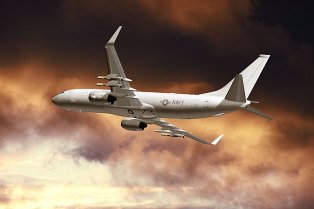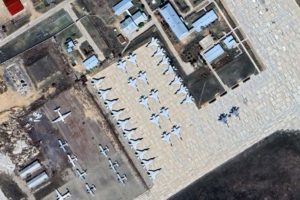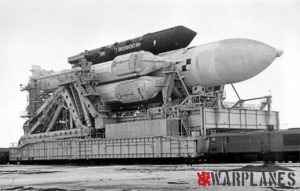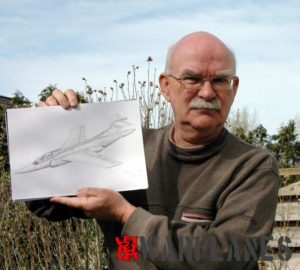P-8A Multi-Mission Maritime Aircraft Homebasing Announced
The Department of the Navy announced on January 2nd 2009 its decision to provide facilities and functions to base five fleet squadrons of the P-8A Multi-Mission Maritime Aircraft (MMA) with a fleet replacement squadron at Naval Air Station Jacksonville, Florida, four fleet squadrons at NAS Whidbey Island, Wash., and three fleet squadrons at Marine Corps Base Hawaii Kaneohe Bay, Hawaii, with periodic squadron detachment operations at NAS North Island. This decision implements the preferred homebasing alternative 5 identified in the final environmental impact statement (FEIS) for the Introduction of the P-8A Multi-Mission Aircraft into the U.S. Navy Fleet.
 The P-8A MMA has been specifically designed to replace the P-3C, enabling it to become the next generation Navy maritime patrol aircraft. The P-8A MMA will replace the retiring P-3C beginning no later than 2012. The Boeing P-8 Poseidon is intended to conduct anti-submarine warfare, shipping interdiction, and to engage in an electronic intelligence role. This will involve carrying torpedoes, depth charges, Harpoon anti-shipping missiles, and other weapons. It will also be able to drop and monitor sonobuoys. It is designed to operate in conjunction with the Broad Area Maritime Surveillance unmanned aerial vehicle. The P-8A is the cryptic U.S. Navy designation for a garden variety Boeing 737 airliner-turned-warplane. The biggest difference between B737 Airliner and P-8A is the bomb bay. That bomb bay has the capacity to carry five torpedoes. There are also more antennas than you’d ever have on a 737 then a turret with a camera and finally the interior of this airplane is not at all like that of a 737 airliner. There are five consoles where the guys have the total tactical picture on screens. There are sonobuoy launchers. The sonobuoys are launched into the water and they listen for whatever is underwater and they send signals back to P-8. Hard points are added on the wings to carry Harpoon missiles as well as standard bomb load. The P-8 is unique in that it has 767-400ER-style raked wingtips, instead of the blended winglets available on 737NG variants. Purpose of raked wingtips is to improve fuel economy, climb performance and to shorten takeoff field length. It does this in much the same way that winglets do, by increasing the effective aspect ratio of the wing and interrupting harmful wingtip vortices. This decreases the amount of lift-induced drag experienced by the aircraft.
The P-8A MMA has been specifically designed to replace the P-3C, enabling it to become the next generation Navy maritime patrol aircraft. The P-8A MMA will replace the retiring P-3C beginning no later than 2012. The Boeing P-8 Poseidon is intended to conduct anti-submarine warfare, shipping interdiction, and to engage in an electronic intelligence role. This will involve carrying torpedoes, depth charges, Harpoon anti-shipping missiles, and other weapons. It will also be able to drop and monitor sonobuoys. It is designed to operate in conjunction with the Broad Area Maritime Surveillance unmanned aerial vehicle. The P-8A is the cryptic U.S. Navy designation for a garden variety Boeing 737 airliner-turned-warplane. The biggest difference between B737 Airliner and P-8A is the bomb bay. That bomb bay has the capacity to carry five torpedoes. There are also more antennas than you’d ever have on a 737 then a turret with a camera and finally the interior of this airplane is not at all like that of a 737 airliner. There are five consoles where the guys have the total tactical picture on screens. There are sonobuoy launchers. The sonobuoys are launched into the water and they listen for whatever is underwater and they send signals back to P-8. Hard points are added on the wings to carry Harpoon missiles as well as standard bomb load. The P-8 is unique in that it has 767-400ER-style raked wingtips, instead of the blended winglets available on 737NG variants. Purpose of raked wingtips is to improve fuel economy, climb performance and to shorten takeoff field length. It does this in much the same way that winglets do, by increasing the effective aspect ratio of the wing and interrupting harmful wingtip vortices. This decreases the amount of lift-induced drag experienced by the aircraft.
General Characteristics
Primary Function: Anti-Submarine and Anti-surface Warfare
Contractor: Boeing IDS
Date Deployed: First squadron is planned for 2013.
Propulsion: Two high-bypass CFM56 turbofan engines
Length: 129.5 feet (39.47 meters)
Height: 42.1 feet (12.83 meters).
Wingspan: 117.2 feet.
Weight: Maximum gross takeoff, 188,200 pounds
Airspeed: 490 knots.
Ceiling: 41,000 ft.
Range: 1,200 nautical miles radius with four hours on station.
Crew: Nine.
Armament: Torpedoes, cruise missiles, bombs, mines
Features
• Open Mission System Architecture: reconfigurable and expandable system facilitating easier, more affordable upgrades.
• Sensors: Active multi-static and passive acoustic sensor system, inverse synthetic aperture/synthetic aperture radar, new electronic support measures system, new electro-optical/infrared sensor, digital magnetic anomaly detector.
• Nine-person crew: dual-pilot cockpit, five mission crew (plus relief pilot and in-flight technician). Workstations with universal multi-function displays, ready accommodation for additional workstation, workload sharing.
• Lethality: internal five-station weapons bay, four wing pylons, two centerline pylons, all supported by digital stores management allowing for carriage of joint missiles, torpedoes and mines. Search stores: rotary reloadable, pneumatically controlled sonobuoy launcher.
• Net Ready: Link-11/Link-16, Internet Protocol, Common Data Link (CDL), FORCEnet compliant.
• Performance based support/logistics with availability a key performance parameter.
P-8A MMA will be a key component in the Navy’s Sea Power 21 Sea Shield concept by providing persistent anti-submarine and anti-surface warfare capabilities, supporting Sea Power 21’s Sea Strike doctrine through provisions of intelligence, surveillance and reconnaissance capabilities. The platform will also play a key role in the Navy’s FORCEnet architecture via development of the common undersea picture. These operational capabilities will be key factors in providing a sustained forward presence, sea domination, and distributed and networked intelligence.
Suorce
http://www.mmaeis.com/
http://www.boeing.com/
http://www.news.navy.mil/
http://www.navy.mil/
Darko Mladenovic
Photo credit- Boeing









Great Article ,it always supprises me all the little details peolple know. Good to see that there are still people modeling to .I am currentley building a
737 throttle and its taking some time. But i am always looking at different versions of the 737.